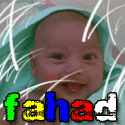Appetite is largely governed by energy intake and gut fill but can be significantly affected by individual animal tendencies and how tasty the food being offered is. Each animal has a maintenance requirement which is the energy necessary for all the resting bodily functions such as the beating of a heart and the constant action of nerve and muscle fibres. Above this is the requirement for voluntary activity such as running and playing.
Every animal has its own rate and efficiency of use for these activities which makes it impossible to create a reliable formula for food requirement. Dogs (and cats to a lesser extent) will eat excessively simply because the food tastes good, a phenomena which gave rise to pet food advertising with statements like "eight out of ten cats prefer it" and the counter advertisement by hills science diet which states below a large photograph of sweets and ice cream that "eight out of ten children may prefer it".
Types of food vary enormously but can be broken down into those which which are 'complete', or those which form only a part of a diet such as 'mixer' biscuits. Complete feeds provide all the necessary nutrients discussed below and do not require any additional food provision. Food may also be dry or moist. Traditional feeding was typically based on a canned moist food with mixer biscuits. Many of the earlier dry feeds were poorly balanced and particularly in cats, predisposed them to kidney failure and other problems.
Dry foods are now much improved and many reputable manufacturers provide dry or moist equivalents of the same food brand, the only difference being the moisture content. It is always very important when giving a dry diet to provide adequate fresh water as the requirement is not present in feed. Cystitis can be a problem even in the best balanced dry food if water intake is inadequate.
Dry or crunchy foods also have a significant benefit on cleaning a pets teeth and indeed specific diets such as Hills 'T/d' are available for this purpose.
Feeding Regime
The feeding regime is how much and how often our pets are fed. There is an established pattern to feed dogs and cats once daily, but there is little good reason to follow this and indeed twice daily feeding has many benefits. More regular salivation improves dental hygiene, smaller meals are easier to digest, and more frequent feeding reduces boredom and begging problems. Of significant importance in deep chested and large breed of dog is the prevention of gastric bloat and torsion which can be induced by large meals, particularly if followed by exercise. Gastric bloat and torsion is a life threatening emergency requiring immediate veterinary intervention.
Bones and chews
Vets will almost always advise that bones and often chews are avoided due to frequent problems when large fragments are swallowed. These can obstruct and even perforate the bowel. However, there are benefits with these, particularly to dental health, and some dogs can tolerate large bones very well. Chews such as Rasks, Royal Canin's Mini Oral Bar and CET chews are a much safer option.
Always consult your own veterinary surgeon before giving bones to a pet. Never give poultry bones, as these often produce sharp fragments when chewed.
Carbohydrates
All food has an energy value. Carbohydrates are essentially sugars and provide a rich source of energy. Simple sugars such as glucose and dextrose are readily available 'instant-energy'. Starches are readily digested into simple sugars and are derived from potatoes, rice, pasta and other common plant and cereal sources. Starches form a major constituent of many diets as they provide a ready energy source that is more sustained and filling than the simple sugars. Non- digestible carbohydrates form fibre and allow your pet to form a bulky faecal stool. Fibre is generally not broken down by simple stomached animals like dogs or cats, but allows digestion of the other nutrients and formation of a regular, firm, healthy stool. Insufficient dietary fibre can often result in diarrhoea and anal gland problems.
The requirement for carbohydrates is governed by the weight and activity of our pets. Active animals have a greater need, obese animals and often older animals have much less. Specific diets are formulated to meet these needs, such as Royal Canin's 'Obesity' and various geriatric diets. Animals with poor digestion can be helped by a higher fibre, slower digested diet such as Hills i/d. Diabetic animals also are unable to cope well with simple sugars and require a higher fibre food such as Royal Canin's Diabetic diet, or Hills r/d.
Protein
Protein provides animals with essential building blocks, the amino acids, which go to make up muscles but are present in almost all body tissues. Certain amino acids can be synthesised by the animal itself, others cannot and are termed 'essential amino acids'. These must be provided in the diet. Sources of protein are traditionally meat but alternatives are available and dogs can have a balanced meat-free diet. Cereals, chicken, fish and soya are common sources of protein.
The protein that our pets eat is largely digested in the bowel and absorbed as the constituent amino acids, which are then broken down and assimilated in the liver and other body tissues. The result is the correct balance of amino acids for the individuals needs, coupled with waste nitrogen products - many of which are excreted through the kidneys.
Kidney failure results in the nitrogen waste products failing to be excreted into the urine. Urea is measured in blood to evaluate kidney failure, which affects about 75% of older cats. These cats still have protein requirement to maintain tissue bulk, often high requirements, but it is essential that only the most readily utilized protein is provided through their diet. Diets such as hills k/d utilize specific ingredients to achieve the correctly balanced diet.
Growing dogs and active sporting dogs will also have greater requirement provided by life stage diets, available from many manufacturers.
Fat
It is essential that diets contain a small amount of fat. Fat provides a more concentrated but less available source of energy than the carbohydrates. This means that a high fat diet can increase obesity but a balanced diet containing fat will satisfy the appetite better than a low fat, high carbohydrate diet.
Essential fatty acids are so termed because like the fat soluble vitamins A, D, and E, they cannot be synthesised by the animal but are necessary for normal healthy skin, immune, hormone, and other body systems. Occasionally supplementation is necessary for dry skin conditions. Reputable products such as Efavet capsules and viacutan liquid have been specifically designed for use in dogs and cats. Evening Primrose oil has also been traditionally used as a supplement in many skin disorders If appetite is poor, flavour becomes important and it is fat that adds the flavour to many foods, especially meats. Warming food can also enhance flavour.
Exocrine Pancreatic Insufficiency (EPI) is a disease where the pancreas fails to secrete the enzymes amylase and lipase essential to digest dietry fat. The result is greasy, soft, often white faeces. The disease is especially common in German Shepherd Dogs but can be present in other breeds too. Reducing the fat levels in the diet can help but usually it is necessary to supplement each meal with the deficient enzymes. Products such as Pancrex, Lypex, or Panzym Powder are available for this purpose.
Vitamins And Minerals
Vitamins are essential nutrients without which many normal body functions are impossible. They are either water or fat soluble and must be be present to meet RDA (recommended daily allowance) in any balanced diet. It is not necessary or advisable to supplement a complete diet with vitamins without the advice of your veterinary surgeon.
Minerals are the raw elements which are required in varying quantities and are termed 'macro' or 'micro' minerals, dependant on the quantity necessary for life.
Macro-minerals include calcium, necessary for development of teeth and bones and present in the body in large quantities. Balanced supplements are available for specific situations such as late pregnancy and suckling young. Supplying individual minerals is not recommended, as each one affects others and unnecessary supplementation may upset a fine natural balance.
Micro-minerals such as copper or selenium are only required in very small amounts and again the correct balance is essential for tissue health and development, as well as normal immune and other functions. Supplementation of micro-minerals is only usually recommended under veterinary supervision.
Vitamin and Mineral Supplements such as SA37 for growth and during lactation can be considered, especially in large breeds, but often it is better to use an appropriate complete life stage diet.
Diarrhoea
There are many causes of diarrhoea; from dietary excess, indiscretion, intolerance and allergies to parasites such as worms or protozoa and infections. Many can be controlled by dietary changes alone, for others specific treatments are necessary. Historically Kaolin has been used as a binding agent but this is not well accepted by most cats or dogs. Now modern treatments that are far more palatable such as Canikur tablets and Canikur granules for cats or smaller dogs are available. Pro-Kolin paste for dogs and cats can be very effective. During recovery from many operations ailments and digestive upsets pro-biotic can be given to help restore the natural bacterial or yeasts present within the digestive tract, Protexin provides a range of products suitable for cats, dogs, rabbits and horses.
While it is generally acceptable to withdraw food for 12-48 hours for pets with diarrhoea adequate provision of fresh clean water must always be available. Whenever diarrhoea persists beyond 1 or 2 days dehydration can be a very serious concern and a proper evaluation should be made by your veterinarian.
Older Animals
Geriatric pets have altered nutritional needs. Often the appetite is reduced and activity can be less but at the same time it is important to ensure adequate mineral vitamin and protein provision to maintain often wasting muscle mass. In many cases specific diets to suit certain geriatric diseases are of paramount importance, and advise in these cases should always be sought from your veterinarian. When animals are old (cats and dogs typically over eight years of age) it may be enough just to adopt a lifestyle diet from one of the established manufacturers such as Hills, Iams, Royal Canin/ Walthon ( RCW ) or Purina.
Special Prescription Diets
Special Prescription Diets are so called because they are generally only provided through a veterinary surgeon. Examples include:-
Kidney diets commonly given to cats with chronic renal failure. These diets contain minimal salt, fat and protein, and the most digestable proteins and carbohydrates. The idea is to minimise the waste products of digestion which create many of the clinical signs of disease, whilst maintaining tissue mass to prevent wasting. Most commercial diets are based on chicken and rice, examples include Hills k/d and Royal Canin Renal diet.
Dental diets aim to maximise chewing and salivation while scaping the surface of the teeth and penetrating the gaps between the teeth. The principal of the diet is to provide the right shape and consistency of biscuit with minimal sugars and deposit. Examples include Hills t/d
Diabetic diets must provide a slowly digested and absorbed carbohydrate source to maintain level blood glucose concentration. This is generally achieved by providing high fibre with low fat and simple sugar levels. Examples include Hills i/d and Royal Canin Diabetic diets.
Sensitivity diets are provided for dogs with food allergies or intolerances. Generally common allergens such as wheat glutens are avoided, there is a high fibre inclusion, and protein and carbohydrate are provided from novel sources. There is a great variety of products available from chicken and rice based foods such as Hills i/d to capelin and tapioca diets and Royal Canins Sensitivity control . Atopy, or allergic skin disease, can also be supported by the use of many of these diets when a veterinarian has diagnosed food allergic dermatitis.
Obesity diets are well provided to contain the minimal calories with the maximum gut-fill. There is usually a very high fibre content, and many have biscuits expanded with air and designed scientifically to swell in the stomach giving a 'full' feeling. Examples include Hills r/d and Royal Canin Obesity.
:z
Every animal has its own rate and efficiency of use for these activities which makes it impossible to create a reliable formula for food requirement. Dogs (and cats to a lesser extent) will eat excessively simply because the food tastes good, a phenomena which gave rise to pet food advertising with statements like "eight out of ten cats prefer it" and the counter advertisement by hills science diet which states below a large photograph of sweets and ice cream that "eight out of ten children may prefer it".
Types of food vary enormously but can be broken down into those which which are 'complete', or those which form only a part of a diet such as 'mixer' biscuits. Complete feeds provide all the necessary nutrients discussed below and do not require any additional food provision. Food may also be dry or moist. Traditional feeding was typically based on a canned moist food with mixer biscuits. Many of the earlier dry feeds were poorly balanced and particularly in cats, predisposed them to kidney failure and other problems.
Dry foods are now much improved and many reputable manufacturers provide dry or moist equivalents of the same food brand, the only difference being the moisture content. It is always very important when giving a dry diet to provide adequate fresh water as the requirement is not present in feed. Cystitis can be a problem even in the best balanced dry food if water intake is inadequate.
Dry or crunchy foods also have a significant benefit on cleaning a pets teeth and indeed specific diets such as Hills 'T/d' are available for this purpose.
Feeding Regime
The feeding regime is how much and how often our pets are fed. There is an established pattern to feed dogs and cats once daily, but there is little good reason to follow this and indeed twice daily feeding has many benefits. More regular salivation improves dental hygiene, smaller meals are easier to digest, and more frequent feeding reduces boredom and begging problems. Of significant importance in deep chested and large breed of dog is the prevention of gastric bloat and torsion which can be induced by large meals, particularly if followed by exercise. Gastric bloat and torsion is a life threatening emergency requiring immediate veterinary intervention.
Bones and chews
Vets will almost always advise that bones and often chews are avoided due to frequent problems when large fragments are swallowed. These can obstruct and even perforate the bowel. However, there are benefits with these, particularly to dental health, and some dogs can tolerate large bones very well. Chews such as Rasks, Royal Canin's Mini Oral Bar and CET chews are a much safer option.
Always consult your own veterinary surgeon before giving bones to a pet. Never give poultry bones, as these often produce sharp fragments when chewed.
Carbohydrates
All food has an energy value. Carbohydrates are essentially sugars and provide a rich source of energy. Simple sugars such as glucose and dextrose are readily available 'instant-energy'. Starches are readily digested into simple sugars and are derived from potatoes, rice, pasta and other common plant and cereal sources. Starches form a major constituent of many diets as they provide a ready energy source that is more sustained and filling than the simple sugars. Non- digestible carbohydrates form fibre and allow your pet to form a bulky faecal stool. Fibre is generally not broken down by simple stomached animals like dogs or cats, but allows digestion of the other nutrients and formation of a regular, firm, healthy stool. Insufficient dietary fibre can often result in diarrhoea and anal gland problems.
The requirement for carbohydrates is governed by the weight and activity of our pets. Active animals have a greater need, obese animals and often older animals have much less. Specific diets are formulated to meet these needs, such as Royal Canin's 'Obesity' and various geriatric diets. Animals with poor digestion can be helped by a higher fibre, slower digested diet such as Hills i/d. Diabetic animals also are unable to cope well with simple sugars and require a higher fibre food such as Royal Canin's Diabetic diet, or Hills r/d.
Protein
Protein provides animals with essential building blocks, the amino acids, which go to make up muscles but are present in almost all body tissues. Certain amino acids can be synthesised by the animal itself, others cannot and are termed 'essential amino acids'. These must be provided in the diet. Sources of protein are traditionally meat but alternatives are available and dogs can have a balanced meat-free diet. Cereals, chicken, fish and soya are common sources of protein.
The protein that our pets eat is largely digested in the bowel and absorbed as the constituent amino acids, which are then broken down and assimilated in the liver and other body tissues. The result is the correct balance of amino acids for the individuals needs, coupled with waste nitrogen products - many of which are excreted through the kidneys.
Kidney failure results in the nitrogen waste products failing to be excreted into the urine. Urea is measured in blood to evaluate kidney failure, which affects about 75% of older cats. These cats still have protein requirement to maintain tissue bulk, often high requirements, but it is essential that only the most readily utilized protein is provided through their diet. Diets such as hills k/d utilize specific ingredients to achieve the correctly balanced diet.
Growing dogs and active sporting dogs will also have greater requirement provided by life stage diets, available from many manufacturers.
Fat
It is essential that diets contain a small amount of fat. Fat provides a more concentrated but less available source of energy than the carbohydrates. This means that a high fat diet can increase obesity but a balanced diet containing fat will satisfy the appetite better than a low fat, high carbohydrate diet.
Essential fatty acids are so termed because like the fat soluble vitamins A, D, and E, they cannot be synthesised by the animal but are necessary for normal healthy skin, immune, hormone, and other body systems. Occasionally supplementation is necessary for dry skin conditions. Reputable products such as Efavet capsules and viacutan liquid have been specifically designed for use in dogs and cats. Evening Primrose oil has also been traditionally used as a supplement in many skin disorders If appetite is poor, flavour becomes important and it is fat that adds the flavour to many foods, especially meats. Warming food can also enhance flavour.
Exocrine Pancreatic Insufficiency (EPI) is a disease where the pancreas fails to secrete the enzymes amylase and lipase essential to digest dietry fat. The result is greasy, soft, often white faeces. The disease is especially common in German Shepherd Dogs but can be present in other breeds too. Reducing the fat levels in the diet can help but usually it is necessary to supplement each meal with the deficient enzymes. Products such as Pancrex, Lypex, or Panzym Powder are available for this purpose.
Vitamins And Minerals
Vitamins are essential nutrients without which many normal body functions are impossible. They are either water or fat soluble and must be be present to meet RDA (recommended daily allowance) in any balanced diet. It is not necessary or advisable to supplement a complete diet with vitamins without the advice of your veterinary surgeon.
Minerals are the raw elements which are required in varying quantities and are termed 'macro' or 'micro' minerals, dependant on the quantity necessary for life.
Macro-minerals include calcium, necessary for development of teeth and bones and present in the body in large quantities. Balanced supplements are available for specific situations such as late pregnancy and suckling young. Supplying individual minerals is not recommended, as each one affects others and unnecessary supplementation may upset a fine natural balance.
Micro-minerals such as copper or selenium are only required in very small amounts and again the correct balance is essential for tissue health and development, as well as normal immune and other functions. Supplementation of micro-minerals is only usually recommended under veterinary supervision.
Vitamin and Mineral Supplements such as SA37 for growth and during lactation can be considered, especially in large breeds, but often it is better to use an appropriate complete life stage diet.
Diarrhoea
There are many causes of diarrhoea; from dietary excess, indiscretion, intolerance and allergies to parasites such as worms or protozoa and infections. Many can be controlled by dietary changes alone, for others specific treatments are necessary. Historically Kaolin has been used as a binding agent but this is not well accepted by most cats or dogs. Now modern treatments that are far more palatable such as Canikur tablets and Canikur granules for cats or smaller dogs are available. Pro-Kolin paste for dogs and cats can be very effective. During recovery from many operations ailments and digestive upsets pro-biotic can be given to help restore the natural bacterial or yeasts present within the digestive tract, Protexin provides a range of products suitable for cats, dogs, rabbits and horses.
While it is generally acceptable to withdraw food for 12-48 hours for pets with diarrhoea adequate provision of fresh clean water must always be available. Whenever diarrhoea persists beyond 1 or 2 days dehydration can be a very serious concern and a proper evaluation should be made by your veterinarian.
Older Animals
Geriatric pets have altered nutritional needs. Often the appetite is reduced and activity can be less but at the same time it is important to ensure adequate mineral vitamin and protein provision to maintain often wasting muscle mass. In many cases specific diets to suit certain geriatric diseases are of paramount importance, and advise in these cases should always be sought from your veterinarian. When animals are old (cats and dogs typically over eight years of age) it may be enough just to adopt a lifestyle diet from one of the established manufacturers such as Hills, Iams, Royal Canin/ Walthon ( RCW ) or Purina.
Special Prescription Diets
Special Prescription Diets are so called because they are generally only provided through a veterinary surgeon. Examples include:-
Kidney diets commonly given to cats with chronic renal failure. These diets contain minimal salt, fat and protein, and the most digestable proteins and carbohydrates. The idea is to minimise the waste products of digestion which create many of the clinical signs of disease, whilst maintaining tissue mass to prevent wasting. Most commercial diets are based on chicken and rice, examples include Hills k/d and Royal Canin Renal diet.
Dental diets aim to maximise chewing and salivation while scaping the surface of the teeth and penetrating the gaps between the teeth. The principal of the diet is to provide the right shape and consistency of biscuit with minimal sugars and deposit. Examples include Hills t/d
Diabetic diets must provide a slowly digested and absorbed carbohydrate source to maintain level blood glucose concentration. This is generally achieved by providing high fibre with low fat and simple sugar levels. Examples include Hills i/d and Royal Canin Diabetic diets.
Sensitivity diets are provided for dogs with food allergies or intolerances. Generally common allergens such as wheat glutens are avoided, there is a high fibre inclusion, and protein and carbohydrate are provided from novel sources. There is a great variety of products available from chicken and rice based foods such as Hills i/d to capelin and tapioca diets and Royal Canins Sensitivity control . Atopy, or allergic skin disease, can also be supported by the use of many of these diets when a veterinarian has diagnosed food allergic dermatitis.
Obesity diets are well provided to contain the minimal calories with the maximum gut-fill. There is usually a very high fibre content, and many have biscuits expanded with air and designed scientifically to swell in the stomach giving a 'full' feeling. Examples include Hills r/d and Royal Canin Obesity.
:z
Subscribe to:
Post Comments (Atom)










2 comments:
thanks for nice informations.... i do love my pit bull
Thanks for sharing this useful content with us.
কিডনি রোগের প্রতিকার
ফোস্কা থেকে মুক্তি
ক্যান্সারের লক্ষণ
টিউমার চিকিৎসা
ভেষজ চিকিৎসা
Post a Comment